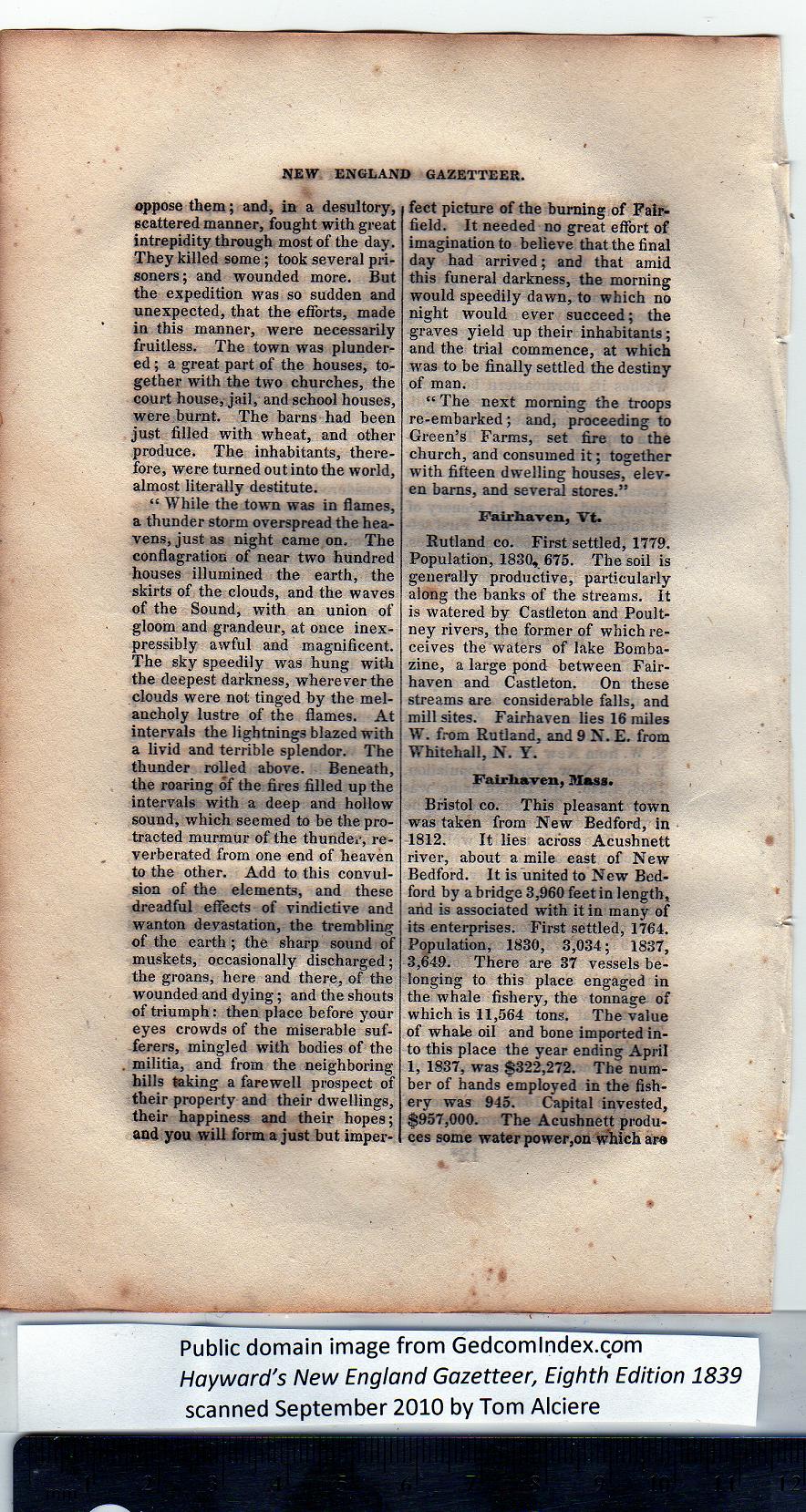|
oppose them; and, in a desultory,
scattered manner, fought with great
intrepidity through most of the day.
They killed some; took several pri-
soners; and wounded more. But
the expedition was so sudden and
unexpected, that the efforts, made
in this manner, were necessarily
fruitless. The town was plunder-
ed; a great part of the houses, to-
gether with the two churches, the
court house, jail, and school houses,
were burnt. The barns had been
just filled with wheat, and other
produce. The inhabitants, there-
fore, were turned out into the world,
almost literally destitute.
“ While the town was in flames,
a thunder storm overspread the hea-
vens, just as night came on. The
conflagration of near two hundred
houses illumined the earth, the
skirts of the clouds, and the waves
of the Sound, with an union of
gloom and grandeur, at once inex-
pressibly awful and magnificent.
The sky speedily was hung with
the deepest darkness, wherever the
clouds were not tinged by the mel-
ancholy lustre of the flames. At
intervals the lightnings blazed with
a livid and terrible splendor. The
thunder rolled above. Beneath,
the roaring of the fires filled up the
intervals with a deep and hollow
sound, which seemed to be the pro-
tracted murmur of the thunder, re-
verberated from one end of heaven
to the other. Add to this convul-
sion of the elements, and these
dreadful effects of vindictive and
wanton devastation, the trembling
of the earth; the sharp sound of
muskets, occasionally discharged;
the groans, here and there, of the
wounded and dying; and the shouts
of triumph: then place before your
eyes crowds of the miserable suf-
ferers, mingled with bodies of the
. militia, and from the neighboring
hills taking a farewell prospect of
their property and their dwellings,
their happiness and their hopes;
and you will form a just hut imper-
fect picture of the burning of Fair-
field. It needed no great effort of
imagination to believe that the final
day had arrived; and that amid
this funeral darkness, the morning
would speedily dawn, to which no
night would ever succeed; the
graves yield up their inhabitants;
and the trial commence, at which
was to be finally settled the destiny
of man. |
“ The next morning the troops
re-embarked; and, proceeding to
Green’s Farms, set fire to the
church, and consumed it; together
with fifteen dwelling houses, elev-
en barns, and several stores.”
Fair haven, Vt.
Rutland co. First settled, 1779.
Population, 1830, 675. The soil is
generally productive, particularly
along the banks of the streams. It
is watered by Castleton and Poult-
ney rivers, the former of which re-
ceives the waters of lake Bomba-
zine, a large pond between Fair-
haven and Castleton. On these
streams are considerable falls, and
mill sites. Fairhaven lies 16 miles
W. from Rutland, and 9 N. E. from
Whitehall, N. Y.
Fairhaven, Mass.
Bristol co. This pleasant town
was taken from New Bedford, in
1812. It lies across Acushnett
river, about a mile east of New
Bedford. It is united to New Bed-
ford by abridge 3,960 feet in length,
and is associated with it in many of
its enterprises. First settled, 1764.
Population, 1830, 3,034; 1837,
3,649. There are 37 vessels be-
longing to this place engaged in
the whale fishery, the tonnage of
which is 11,564 tons. The value
of whale oil and bone imported in-
to this place the year ending April
1, 1837, was $322,272. The num-
ber of hands employed in the fish-
ery was 945. Capital invested,
0957,000. The Acushnett produ-
ces some water power,on which are |
